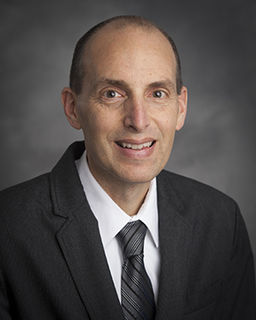In the fifth annual George J. Losoncy Lecture in Physics and Astronomy, Dr. Paul Mantica, a world-renowned nuclear physical chemist and the Deputy Project Manager of Facility for Rare Isotope Beams, a new scientific user facility for nuclear science at Michigan State University, will give a lecture titled "Facility for Rare Isotope Beams: Current Construction Status and Future Science Opportunities" on Friday, April 8, 2016, from 4:30?5:30 p.m. in the Perkins Student Center Auditorium. This event is free and open to the public, and it will be preceded by a reception in the Freyberger Gallery, in the Perkins Student Center, at 4 p.m., where light refreshments will be served.
The talk is the fifth in the annual lecture series named in honor of George Losoncy, who was a dedicated Penn State Berks employee for 17 years, serving the college with perfect attendance, and donating 182 unused sick days when he retired in 2009. He was an enthusiastic supporter of the Science Division Colloquia and was particularly interested in physics and astronomy. Upon his retirement, he donated $50,000 to set up a research endowment in physics and astronomy at Penn State Berks.
The Facility for Rare Isotope Beams (FRIB) is under construction on the campus of Michigan State University (MSU). FRIB will be operated by MSU as a national user facility and will provide intense beams of rare isotopes with the primary mission of addressing outstanding questions about the physics of nuclei, nuclear astrophysics, and fundamental interactions.
In this talk, Mantica will give a status report on FRIB civil and technical construction. He will also discuss the science opportunities with beams of rare isotopes, focusing on the application of lasers to probe the size and shape of the atomic nucleus. This material is based upon work supported by the U.S. Department of Energy Office of Science under Cooperative Agreement DE-SC0000661, the State of Michigan, and Michigan State University.
Presently, Mantica is the FRIB Laboratory Deputy Directory and the FRIB Project Manager and holds the title of University Distinguished Professor at MSU with a joint appointment between FRIB and the Department of Chemistry. He joined MSU in 1995, following a five-year appointment at Oak Ridge National Laboratory. His research interests include the laser probing of rare isotopes to deduce nuclear moments, spins, and charge radii.
He received the MSU Teacher-Scholar award (2000) and the College of Natural Science Outstanding Academic Advisor award (2008). He served as Associate Director for Operations (2009-2012) at National Superconducting Cyclotron Laboratory, and led the effort to define the operational needs for the laboratory that underlie the current Cooperative Agreement between NSCL and NSF. He served as the Director of the Kuali Coeus Research Administration Implementation Project at Michigan State (2012-2014). He was also a member of the Nuclear Science Advisory Committee (2014) and Chair of the Division of Nuclear Chemistry and Technology of the American Chemical Society (2014). He is a Fellow of the American Physical Society, a Fellow of the American Chemical Society, and is a Project Management Professional, certified by the Project Management Institute. He earned his B.S. in Chemistry from Rensselaer Polytechnic Institute and his Ph.D. in Nuclear Chemistry from the University of Maryland, College Park.
For more information about this lecture or the Losoncy Lecture Series, contact Dr. Leonard Gamberg, Professor of Physics, at 610-396-6124 or via email at LPG10@psu.edu.
